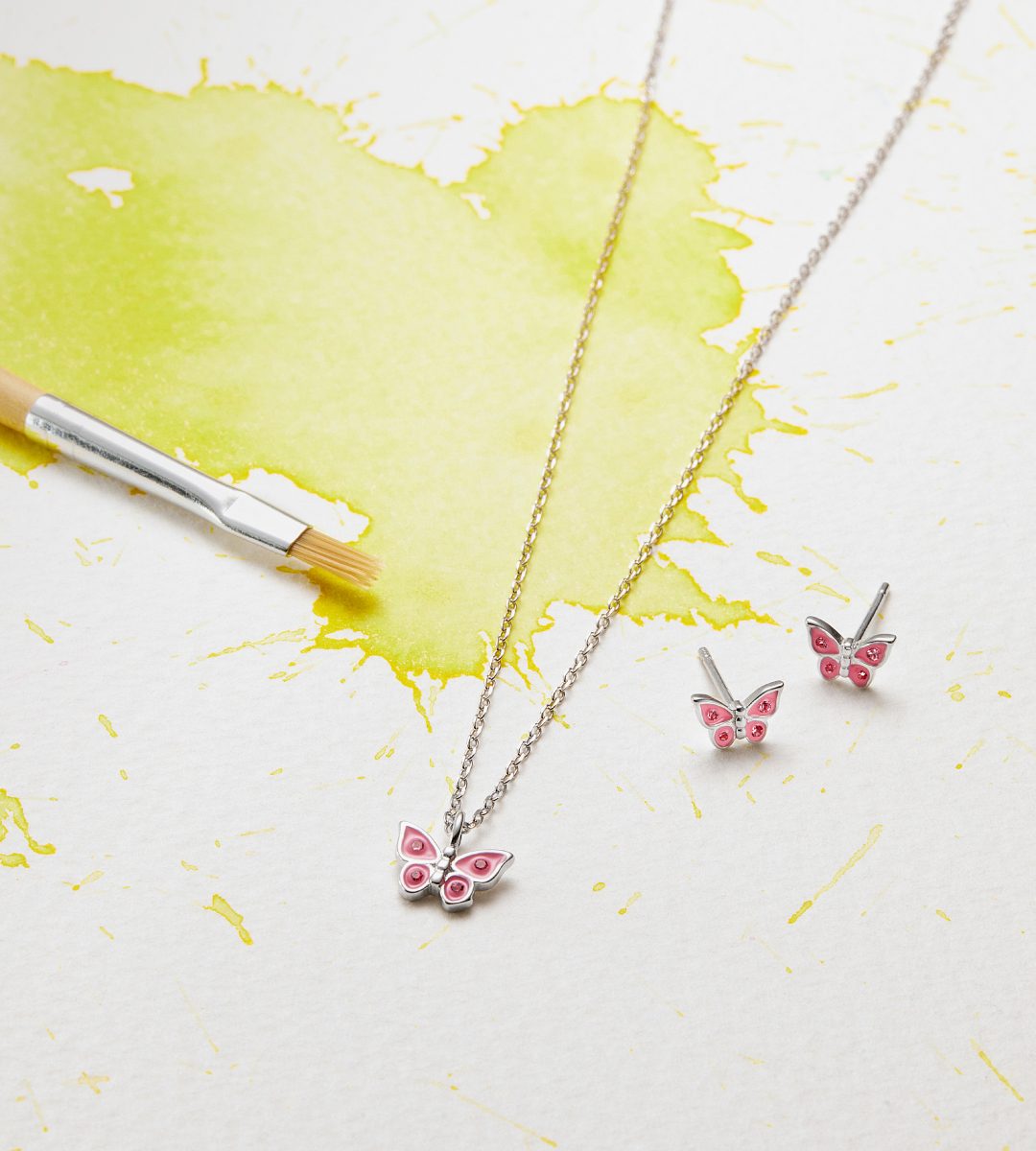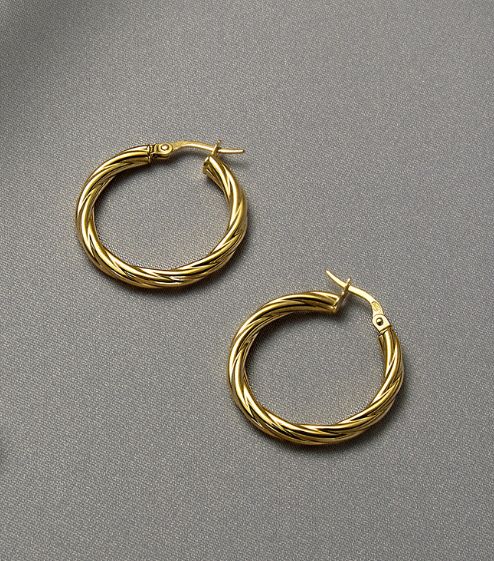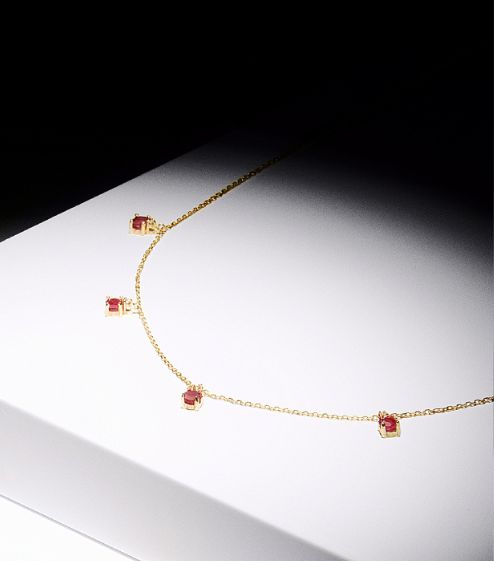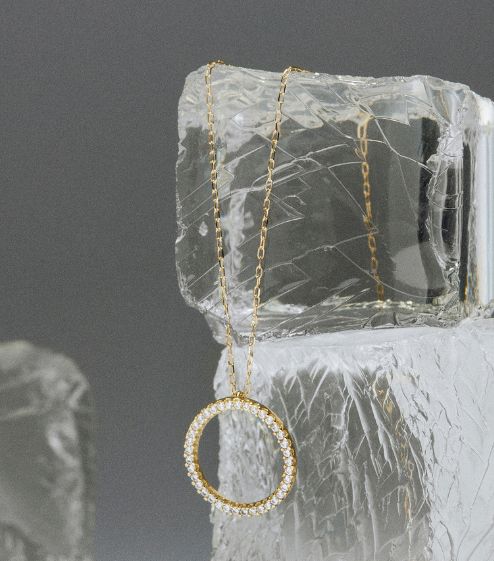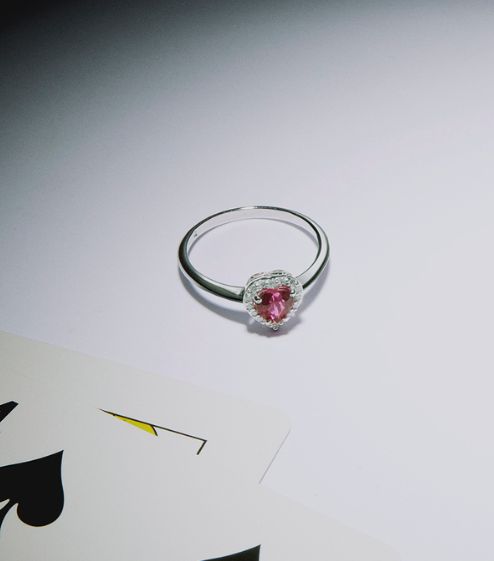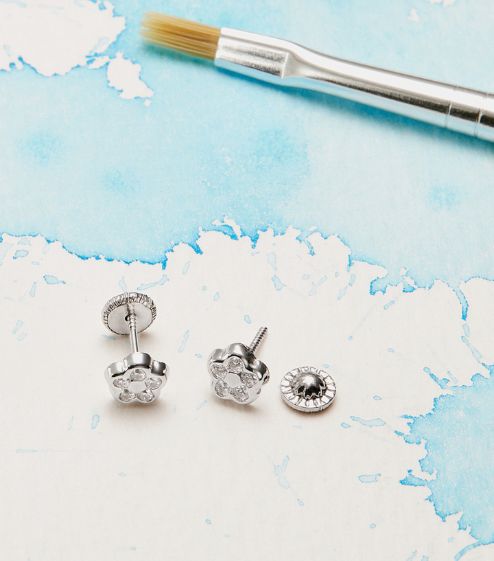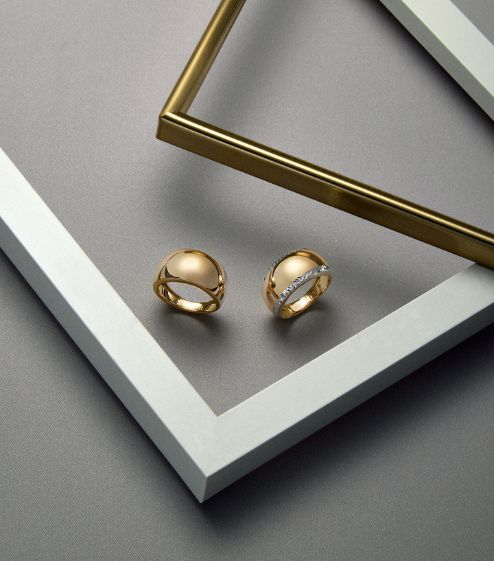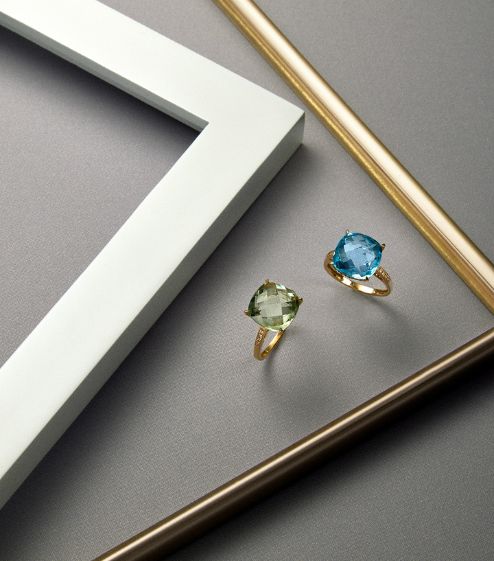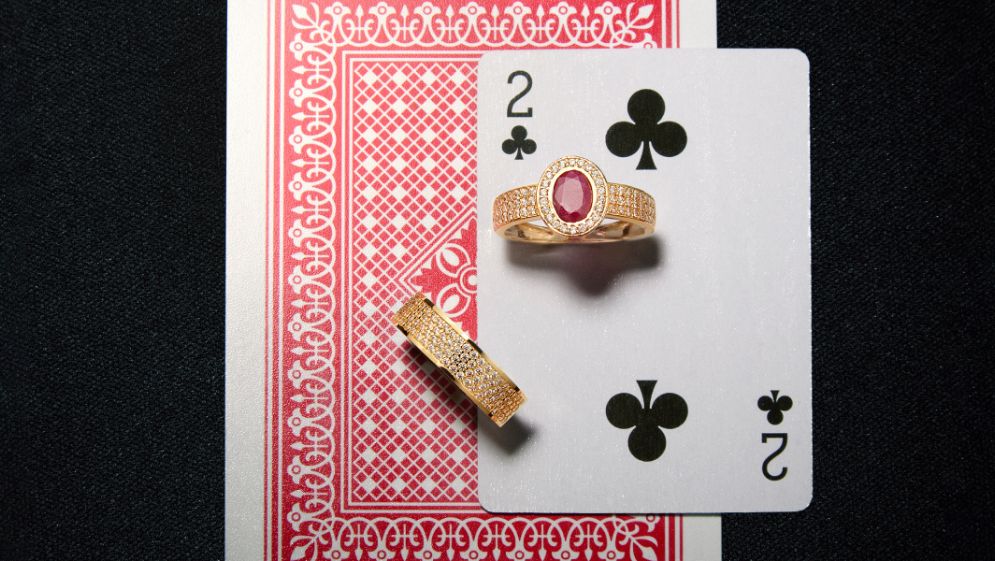

Ruby, the precious stone. Meaning and details

If there is one gemstone with undeniable allure, it is undoubtedly the ruby. Its distinctive colour, which pairs beautifully with a wide range of jewellery, makes it a favourite for the most special gifts. Elegant and unique, with various meanings and benefits, rubies compete directly with the highly coveted diamond. Discover everything about rubies, the precious gemstone, its symbolism, and more details on why it should be a part of your jewellery collection (if it isn’t already).
The ruby: A precious gemstone
Ruby stones have played a significant role throughout history. These gemstones have been associated with royalty and ruling classes, symbolising power when set in jewellery and crowns. They were also revered by many ancient civilisations for their beauty and unique properties.
Records suggest that rubies were mined in Burma (now Myanmar) and transported to Egypt and Greece via trade routes, though it is believed that rubies were first discovered in Sri Lanka. Today, the majority of rubies come from Burma (the primary source) and Southeast Asia, India, Mozambique, Australia, and Brazil. However, they have also been found in Macedonia, the United States, Sri Lanka, Pakistan, and Afghanistan, among other places, where they remain in underground reserves (particularly in the latter two countries). The most sought-after rubies are Burmese rubies, mined in the Mogok Valley of Myanmar, renowned for their intense red colour, known as pigeon’s blood red.
Characteristics of the ruby
The name ruby originates from the Latin ruber, meaning "red". The defining characteristic of this gemstone is its deep red hue, which makes it easily recognisable. One of the most valuable gemstones, the ruby is a variety of corundum, formed by a combination of iron and chromium, which gives it its unmistakable colour. It is one of the four traditional precious gemstones, alongside sapphires, emeralds, and diamonds.
A ruby’s colour composition is 80% red, with the remaining 20% consisting of orange, pink, violet, and lilac tones. This results in a variety of ruby shades, from pinkish hues to deep red and brownish-red stones. The intensity of the red determines the gemstone’s quality, with the most valuable being those from Myanmar, known as pigeon’s blood ruby.
A ruby’s value is determined by several factors, including its place of origin, appearance, and the four Cs: Carat (weight), Clarity (purity), Colour, and Cut.
Furthermore, rubies are among the hardest gemstones, second only to diamonds, and are rare in nature, making them highly prized and valuable.
Ruby jewellery: Meaning
Rubies are powerful gemstones with strong magnetism, carrying various meanings related to emotions and well-being. Due to their vibrant red colour, they are considered the stone of love. However, they are also linked to the root and heart chakras, symbolising stability and prosperity. In addition to being the birthstone for July, rubies are associated with the zodiac signs Capricorn, Cancer, and Leo.
The symbolic meanings of rubies can be grouped into four key areas:
- Protection: Since ancient times, rubies have been believed to possess protective powers, bringing good fortune and prosperity to those who wear them. For this reason, Greek and Roman soldiers adorned their weapons with rubies to gain strength and luck in battle. Rubies are also said to ward off negative energies, promoting harmony in the wearer’s life.
- Emotional benefits: Wearing ruby jewellery is believed to enhance self-confidence and willpower, improve focus, boost motivation, and promote inner peace.
- Healing properties: Alternative medicine attributes various meanings to rubies. They are thought to stimulate circulation and digestion, aid in the production of white and red blood cells, and help regulate hormones. However, it is important to note that these properties are not scientifically proven.
- Love: Strongly connected to romantic love, a ruby represents passion, deep affection, and purity. It is also associated with libido and fertility, making it a perfect gemstone for gifts between partners, such as engagement rings.
Ruby stones hold a deep spiritual significance, offering strength and emotional energy to those who wear them. Wearing ruby jewellery means embracing its powerful influence, making it a perfect gift for loved ones. If you don’t yet own a piece of ruby jewellery, we invite you to explore our collection of ruby jewellery and experience the magic of this iconic and special stone.
*This translation has been generated automatically.

